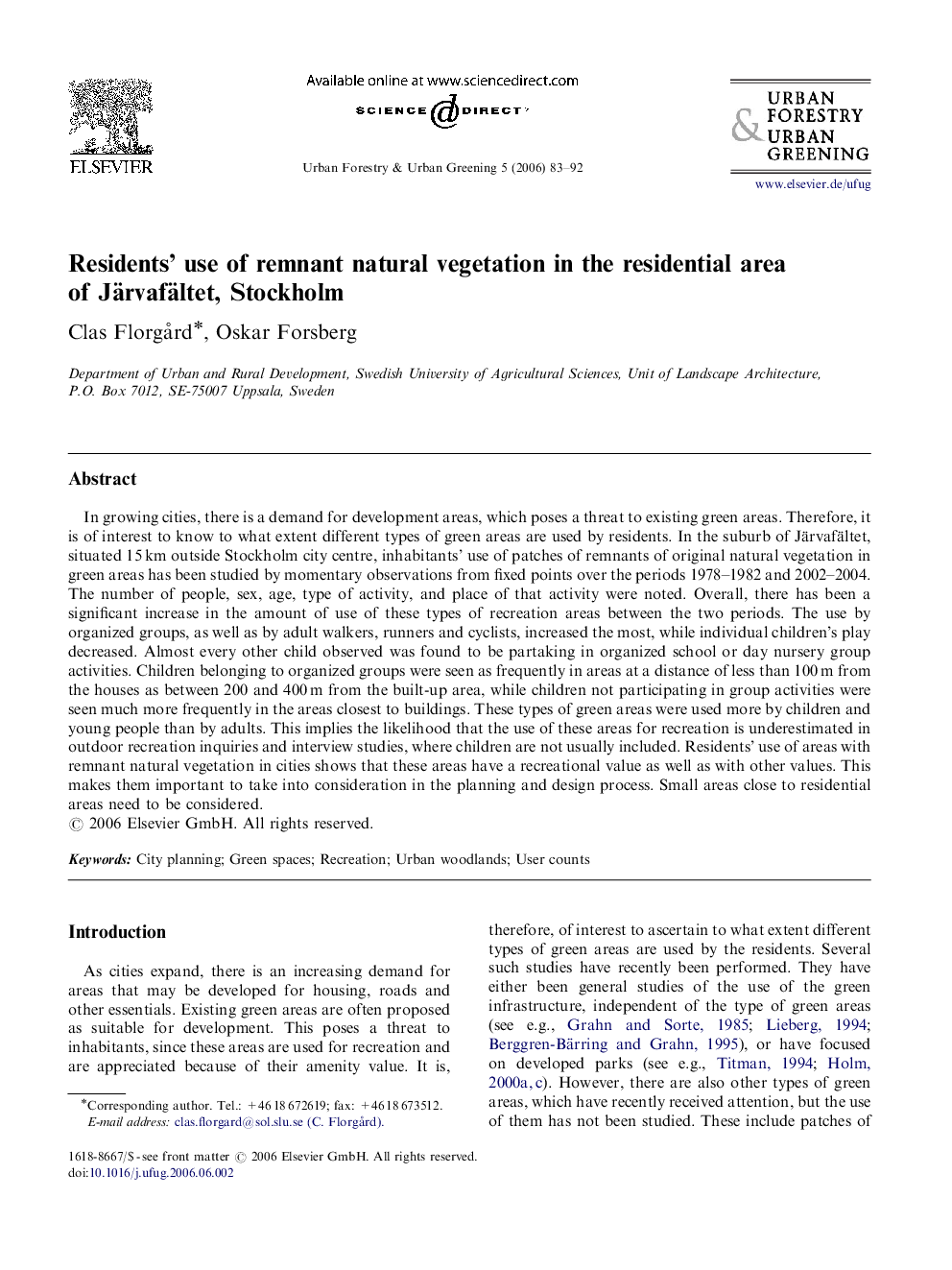| کد مقاله | کد نشریه | سال انتشار | مقاله انگلیسی | نسخه تمام متن |
|---|---|---|---|---|
| 94408 | 160286 | 2006 | 10 صفحه PDF | دانلود رایگان |

In growing cities, there is a demand for development areas, which poses a threat to existing green areas. Therefore, it is of interest to know to what extent different types of green areas are used by residents. In the suburb of Järvafältet, situated 15 km outside Stockholm city centre, inhabitants’ use of patches of remnants of original natural vegetation in green areas has been studied by momentary observations from fixed points over the periods 1978–1982 and 2002–2004. The number of people, sex, age, type of activity, and place of that activity were noted. Overall, there has been a significant increase in the amount of use of these types of recreation areas between the two periods. The use by organized groups, as well as by adult walkers, runners and cyclists, increased the most, while individual children's play decreased. Almost every other child observed was found to be partaking in organized school or day nursery group activities. Children belonging to organized groups were seen as frequently in areas at a distance of less than 100 m from the houses as between 200 and 400 m from the built-up area, while children not participating in group activities were seen much more frequently in the areas closest to buildings. These types of green areas were used more by children and young people than by adults. This implies the likelihood that the use of these areas for recreation is underestimated in outdoor recreation inquiries and interview studies, where children are not usually included. Residents’ use of areas with remnant natural vegetation in cities shows that these areas have a recreational value as well as with other values. This makes them important to take into consideration in the planning and design process. Small areas close to residential areas need to be considered.
Journal: Urban Forestry & Urban Greening - Volume 5, Issue 2, 15 August 2006, Pages 83–92